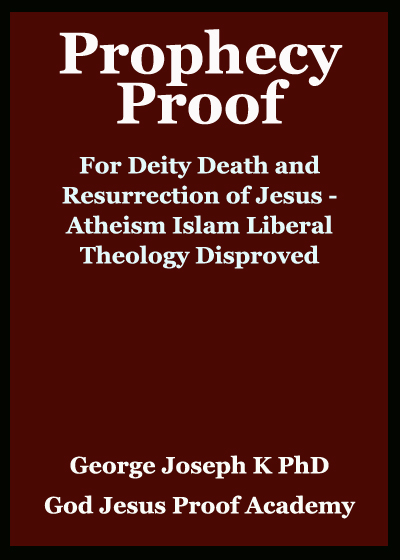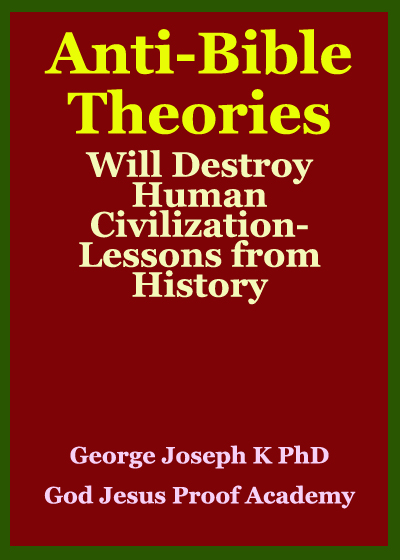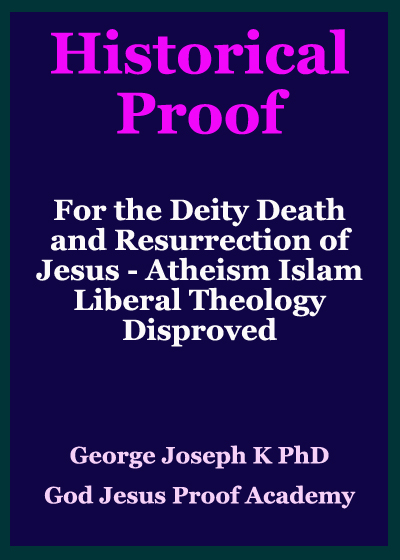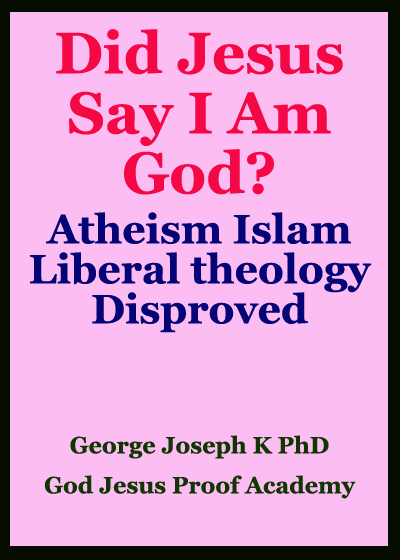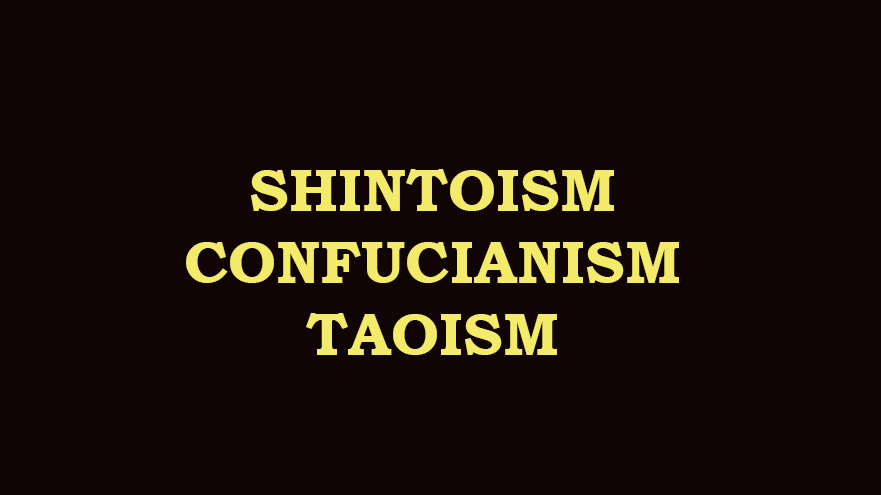
SHINTOISM CONFUCIANISM TAOISM
SHIN means god and TO means way. Thus, it is the way of the gods. It is native to Japan and is closely related to the Japanese way of life and tradition. It is the national religion of Japan. It is atheistic. If at all there are gods, it believes, they have evolved from the world spontaneously at certain stage in the world's evolution. It is a religion invented by man to explain his ancestry and environment while taking no consideration for anyone but himself. It is basically not a system of beliefs nor a systematized code of behavior, but a reverent loyalty to familiar ways of life and familiar places. It has neither a founder not sacred writing. Its basis is worship of KAMI or spirits to assure prosperity. (Richard Cavendish The Great Religions NY Arco Publishing Co. 1980. pp 121-133)
In 1868 Shinto was declared as Japan's official state religion. Emperor Meiji ascended to the throne as the descendant of the sun goddess Amaterasu. Thus, emperor was believed to be define. Though connections with Buddhism was officially cut, ordinary people considered Shinto taking care of their need in the present world and Buddhism of the next world.
DIVINE ORIGIN: They believe that the Islands of Japan are the first divine creation. They make Japan the center of their universe. Japanese name for their country is Nippon, means sun origin. They believe that Japanese emperors were descendants of sun goddess AMATERASU OMOKAMI. This goddess is regarded as the guardian of agriculture and ancestress of the ruling family. The emperor Jimmu, her great grandson, was supposed to have received from her the mirror sword and jewel. The possession of these regalia has been the symbol of emperor's authority. They believe Japan is a country of Gods and her inhabitants are descendants of God. Hence between other people and Japanese there is a difference of kind, than degree. Hence for them there is a sense of immeasurable superiority in intelligence and courage. KAMI which literally means 'superior beings' are the gods or spirits in the nature. The people trace their origin from Kami. They exaggerated its emphasis to make Shinto into an ideology justifying a nationalistic expansionist policy. (Smart Ninian The Religious Experience of Mankind NY Charles Scribner’s, 1969 pp 55-67)
STATE RELIGION: During 800 - 1700 AD it mixed with Buddhism and Confucianism and formed Ryobu Shinto. Emperor Meiji established Shinto as the official religion of Japan in place of Buddhism. State Shinto was regarded as a patriotic ritual for the citizens irrespective of their religion. Only with defeat in second world war it abolished as the religion of the people. In the 20th century Japanese Govt compelled people to participate in Shinto ceremonies as an expression of patriotism. Hence Christians were persecuted during second world war. But after 1945 the allied powers abolished Shinto. But gradually old traditions were revived.
BELIEFS AND PRACTICES OF SHINTOISM
The Shinto worship centers around kami or spirits. They are deities of heaven and earth that appear in the ancient records and also the spirits of the shrines where they are worshipped. They include human beings, birds, beasts, trees, mountains and so forth. Whatever possessed superior power or owe inspiring was called kami. Thus, kami is anything towards which believer feels inferiority. But the deities are not thought of as absolute supernatural beings. All things which exits have spiritual nature and thus can be called kami. They worship many gods. Hence it is polytheistic. The center of worship is local shrine. There are a large number of deities the chief of which is goddess Amaterasu. Her imperial shrine which is a place of centralized worship is the most sacred place of Japan. (Richard Cavendish The Great Religions NY Arco Publishing Co. 1980. pp 34-46)
Shintoism teaches that man is child of kami, because his life has come from gods. Moreover, man is a potential kami. Hence Shinto is optimistic and makes man to accept life as it is. Thus, the believer feel that everything is basically good and in the future it will be better.
There is no opposition between life and death in Shinto. Man is believed to live even after death and continues to receive blessings from kami. The only difference between the living and the dead is in the place where they are. The dead are allowed to visit earth during festivals.
Shinto has no ethical system and offers no moral code. Confucianism strengthened its traditional rites of ancestor worship and system of ethics centered around filial piety. Buddhism also influenced it. Shinto emphasizes quietly living out one’s proper way of life. That which lacks natural beauty is bad. Evil is not regarded in the moral way, but in terms of pollution. The cause of evil is believed to be outside human control, in the actions of evil spirits. Thus, cure of sin is not in personal repentance, but in participation in purification ceremonies. There is no idea of final judgement. They believe that man is good. (David A Brown A Guide to Religions. ISPCK, Delhi. 1994. pp 54-57)
SHINTO SHRINES AND WORSHIP: There is great emphasis on proper performance of ceremonies at the shrines of kami to secure prosperity. PURIFICATION RITES: They include ablutions, exorcisms, and abstentions. OFFERINGS: After purification the believer makes rites of offering which include festive foods and presentation of dance and songs. PRAYER: The focal point of rituals is prayer to deities in the form of praise of kami, petitions for protection and entreaty for blessings. Prayers are read. SCRIPTURES: Most important are Record of Ancient Matters and Written Chronicles of Japan.
TYPES OF MODERN SHINTO
SHRINE SHINTO: This is the link between ancient and modern Shinto. Shinto shrines are the dwelling places of the Kami and also buildings for their worship. They are sacred places.
SHINTO OF THE IMPERIAL HOUSE: This is centered on the performance of rites on behalf of the spirits of the imperial ancestors. Rites are performed by emperor himself.
FOLK SHINTO: It describes the mixture of superstition, magic and other practices of the common people.
SECT SHINTO: They are 13 religious groups that came into existence in 19th century. they have concern for human welfare in this present earthly life.
STATE SHINTO: It is a political creation developed in the 19th century to combine shrine Shinto with Shinto of the imperial house. It continued until 1945 when it was abolished by allied powers.
SHINTO AND CHRISTIANITY: Biblically Jews are the chosen people of God. But they are never designated better than any other people and are not direct descendants of God as Shinto teaches. Shinto fosters pride and a feeling of superiority. Since it teaches basic goodness and divine origin of its people, there is no need for a savior. Immorality abounds in the stories of Shinto. Everything non-Japanese is abased. (Josh McDowell Evidence That demands a Verdict Sanbernaedino, Campus crusade, 1972 pp 15-26)
CONFUCIANISM
Confucianism is centered around the teachings of one man called Confucius born in 551 BC. His method was not to discover new ideas, but only to transmit the wisdom of the ancients. His aim in teaching was to give faithful interpretation of the past to others. He became famous only after death. He never intended to found a new religion. But he was eventually deified by his followers. Until 1912 the Chinese emperor offered sacrifices in his honor twice a year. (Yutang Lin, The Wisdom of Confucius NY, Random House, 1938.pp 87-89)
It cannot be called atheist. It deals with matters pertaining to the earth like duties between man and man, and religious and social ethics. It is a religion of optimistic humanism and had a monumental impact on the philosophy of China. It is not a religion in the sense of man relating to God. It deals primarily with the moral conduct and ordering of the society. It is an ethical system teaching man to how to get along with his fellow men. Confucius said, 'Absorption in the study of the supernatural is most harmful' (L. Giles Sayings of Confucius: Wisdom of the East Series London, JM Publishers.1917, Vol 2, p 94). It is thus an ethical philosophy of self-support, leaving no need for God, which later germinated into a popular religion. It taught that man can do all things by following the way of the ancients. But Christianity taches that man is in desperate need of a savior. He said man is basically good. But Bible teaches man is basically sinful. (Jer 17:9).
SCRIPTURES OF CONFUCIANISM: Confucius and his disciples collected, edited and interpreted the writings of earlier Chinese philosophers and teachers. His sayings were also collected. They include FIVE CLASSICS: 1. THE BOOK OF CHANGES is a manual of divination to assist in seeing the future events. 2. THE BOOK OF HISTORY is a collection of documents ascribed to emperors. Its moral and religious teaching is that heaven blesses only virtuous rulers with peace and prosperity. 3. BOOK OF SONGS 4. BOOK OF RITES is a code of rules about worship and about social and family relationships. 5. ANNALS OF SPRING AND AUTUMN records 300 years of history of the state. FOUR BOOKS are THE ANALECTS, the sayings of Confucius; THE MENCIUS, the sayings of Mencius; THE DOCTRINE OF THE MEAN; GREAT LEARNING is parts of the treatises of the Book of rites. L.Giles Sayings of Confucius: Wisdom of the East Series London, JM Publishers. 1917 pp 46-49)
TEACHINGS OF CONFUCIANISM
ANCESTOR WORSHIP: It centers around the tablet, funeral and the grave. Offerings like food and candles are placed before tablet. Formal offerings are made on birth and death anniversary of the departed and on the first and last day of the year. When the whole family gathers together it is a reunion of the living and the dead. It is the veneration of the spirits of the dead by their living relatives. They believe that the continued existence of ancestors in spirit depend upon the veneration given to them by the relatives. They also believe that the ancestors can control the fortunes of their families. Hence the living lives in fear of the dead. They place food and wine to satisfy the ancestral spirits. They believe that the world of the dead and the living is one. (Richard C.Bush The Story of Religion in China Niles, Argus. 1977. pp 2-5).
FILIAL PIETY: It is the devotion and obedience of the younger members of the family to the elders. Family is recognized as the basic unit and foundation of the entire social and political structure. 5 basic human relationships are ruler and subject, father and son, husband and wife, elder and younger and friend and friend. Father -son relationship is the foundation of all others. Duties of son-ship include physical and spiritual. He should attend to the bodily needs of parents and rear children. He should obey parents and remember them after death through annual sacrifices and win success and honor to bring glory to the family. Duties of son-ship are a bridge between duties in this world and concerns life beyond.
DOCTRINAL PRINCIPLES OR MORALS: It believes in negative reciprocities like, JEN: It is the idea of humaneness or man to manness: 'not to do what you don't want others to do'. But Gospel is positive, ‘do to others what you want others to do for you'. Its other ideals include courage, benevolence, love, ancestral worship etc. Duties to God are minimized. Women are depreciated. Divorce and polygamy are sanctioned. There is no sanctity of marriage.
SALVATION: It ignores concepts like salvation, God etc. It deals exclusively with this world. FUTURE: It has no eschatology. SIN: It has no conception of sin at all. (Richard C. Bush The Story of Religion in China Niles, Argus. 1977.p 35)
THE GOAL OF LIFE is the discovery of the way of cultivating self, managing one’s household, governing the nation and establishing world peace. For this taking care of one's own personal character and conduct is the core.
FIVE VIRTUES of Confucianism are benevolence, righteousness, propriety, wisdom and trustworthiness. But benevolence is the greatest. It is treating people as though we were attending a high sacrifice; not to do unto others what we would not that they should do unto us; to breed no wrongs in the state and in the home. To practice benevolence one should have politeness, liberality, good faith, diligence and generosity. (Yutang Lin, The Wisdom of Confucius NY, Random House, 1938.pp 86-87)
OPTIMISM: It taught that human nature is basically good since man is the embodiment of Tao which is good. Evil is due to education or environment. The whole universe is based on Li principle. Since all men possess the same Li, the basic nature of all are same, i.e. good. The five virtues of basic Li are benevolence, righteousness, propriety, wisdom and trustworthiness. Unenlightened people are those fail to allow their basic nature to be revealed because of their cravings. Hence man should rid of wrong appearances and return to the basic nature. (David A Brown A Guide to Religions. ISPCK, Delhi. 1994.pp 90-93)
WORSHIP OF HEAVEN: The Confucius cult was established in 2 cent BC as the state religion and continued until 1912. The center of the religion was Heaven, a personal god who has a righteous purpose in governing the world. Emperor is regarded as the son of Heaven appointed to rule the world. Hence emperor made offering to Heaven.
CONFUCIANISM AS A RELIGION: It is chiefly concerned with behavior in this world. It shifted emphasis from heaven to earth. But he never denied the existence of heaven or the supreme ruler. For him heaven was the power on which everything depends. Though there is no ecclesiastical organization, it is still religion to the Chinese. But Mao had denounced it as part of feudal culture. CULT OF CONFUCIUS: The Chinese worship him at annual ceremonies.
(Josh McDowell Evidence That demands a Verdict Sanbernaedino, Campus crusade, 1972 pp 145-155)
TAOISM
Taoism originates from Laou Tze born in 604 BC. His book is TAO TE -CHING which was an explanation of the creative principle (TAO) and of human virtue (TE). It is the basic text of Taoism. It teaches the existence of a supreme being and also that it is possible for the creatures to be absorbed into the creator. Its beliefs are mystical and enigmatic in contrast to the humanistic and ethical teaching of Confucius. But now people have started worshipping Laou Tze and also an imaginary being Yuh-Hwang Shang Te (ruler of the material universe). They also worship heavenly bodies, nature and spirits.
SCRIPTURE: Lao-Tzu is the book which teaches that the less govt the better and that ruler must be led by inaction. It advocates a low-key approach and staying in the background.
TEACHINGS OF TAOISM
THE CREATIVE PRINCIPLE TAO: Tao literally means 'the way'. There is a creative principle TAO which existed before the world. Tao is invisible, inaudible and intangible. It is the ground of all being and is the way in which nature and the universe exist. It is the origin of heaven and earth, the creative principle but not the creator. It does everything but desires nothing. It does not compete with other forces. When man express the same virtue of contentment, he lives good life. 'Those who know don't say and those who say don't know'. It calls for avoidance of all aggressiveness by doing that which is natural and spontaneous.
(Smart Ninian The Religious Experience of Mankind NY Charles Scribners.1969 pp 45-53)
HUMAN VIRTUE TE: 1. INACTION IN NATURE. Nature is something which happens by itself. Man has to be quiet and passive so that TAO may act through without any hindrance. Lao Tzu denied culture and civilization because they were products of human activity. He insisted upon inaction in ruling the people. 'Let the people be innocent of knowledge and desire... by action without deeds all may live in peace. 2. NON-COMPETITION IN EMPTINESS. Inaction refers to outward actions and emptiness is the corresponding inner state; it is absence of desire. He emphasized superiority of humility. Wise man chooses to be last and becomes the first. 3. CONTENTMENT WITH WHAT IS. When one is free from desire and has emptiness of spirit and acts by simply following the way of nature, he can know and attain contentment. Blessed is the man who expects nothing. No greater sin than desire for possession. (Bush Richard C, The Story of the Religion in China Niles, Argus. 1977.pp 130-139)
YING AND YANG: Positive side is YANG: Male, positive, good, light, life; Negative side is YIN: female, negative, evil, darkness, death. Harmonious life can be achieved by proper interaction with these forces. RELIGIOUS TAOISM had sacred scripture, priesthood, temples and disciples. It had also an eschatological belief that a new age would come about overthrowing the old established order. Gradually gods were brought into the system along with belief in heaven and hell and eventually the deification of Lao-Tze. MORALS: They include righteousness, filial piety, respect for the old, cherish widows and children, rejoice others' success, sympathize reverses of others, be generous, never boast, do not murder etc.
(Bush Richard C, The Story of the Religion in China Niles, Argus. 1977.pp 167-180)
SALVATION AND SIN: It is difficult to find duties of man to God.
Its conception of salvation is borrowed from Buddhism. E.g. transmigration of souls. It also teaches the deliverance of soul from evil through purgatorial sufferings.
FUTURE: It believes that each man has 3 souls: one to abide with the dead body, one to be near the spirit tablet, and one to be taken to the purgatory for disciplinary suffering.
TAOISM AS RELIGION
In 221 BC Chin Shin Huang Ti emperor of China adopted Tao religion. During 12 the cent AD there was reformation movement within Taoism. The sect named PERFECTING THE TRUE, founded by Wong Choung Yang closely following the teaching of Lao Tzu, was most influential. He emphasized the need of man living in harmony with nature. It stands for syncretism of Taoism, Confucianism and Buddhism. Another 2 sects which existed until recently PERVADING UNITY OF TAO and HALL OF THE TAO. They believe Tao is a universal energy by submitting to which man can obtain health, wealth and peaceful life. They use charms, magical phrases and incantations to bring themselves into a right relationship with the Tao. They worship images from all religions and use their rituals. But Peoples' Republic of China in 1949 dissolved most Taoist organizations. But now the communists are using Taoism to support the socialist reconstruction of the country. (David A Brown A Guide to Religions. ISPCK, Delhi. 1994.pp 98-102)
WEAKNESSES OF TAOISM
It has no personal and responsible supreme being. It does not adequately recognize the evils of the world, physical facts and resources. It over emphasizes on inactivity. Its ethical ideal is indifference and irresponsibility; inadequate conception of immortal life; lack of program for uplift of society only to return to uncivilized simplicity; its relapse into polytheism, demonolatry and practice of magic. The impersonal Tao is in stark contrast to the personal God of Christianity. Taoism has no real answer to the problem of evil. Its solution of withdrawing from the ills of the society does nothing to cure them. But Jesus provided a once for all solution on the cross. God in Jesus made the ultimate identification with our suffering and secured our salvation from it. In the non-Christian religions man can be very religious and wicked at the same time. E.g., a Hindu cannot kill a man, but can kill a man. Thus, moral and immoral are confounded in many religions. Due to the inadequacy of Taoism and Confucianism, the Chinese now prefer Buddhism. (Josh McDowell Evidence That demands a Verdict Sanbernaedino, Campus crusade, 1972. pp 88-92)
